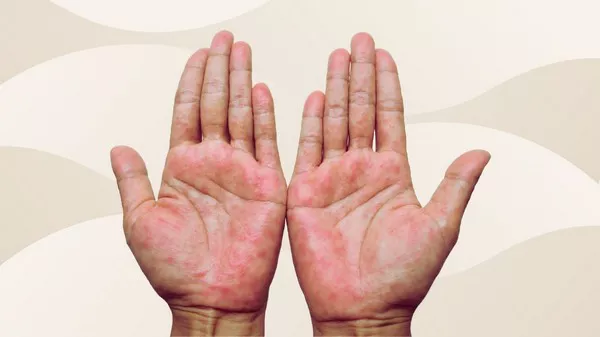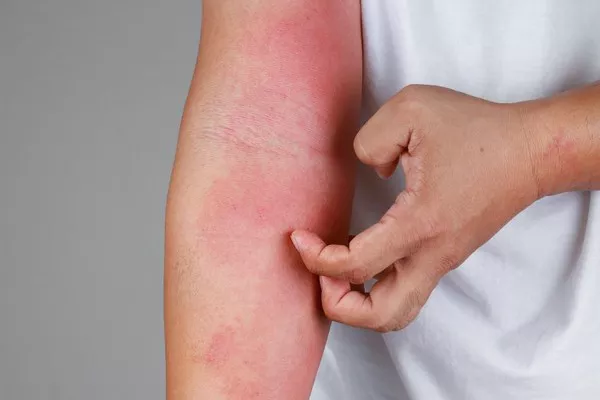Dyshidrotic eczema, also known as dyshidrosis or pompholyx, is a skin condition characterized by the development of small, itchy blisters on the hands and feet. These blisters can cause discomfort and frustration for those affected, often leading them to seek fast and effective treatment solutions. While there is no overnight cure for dyshidrotic eczema, there are several strategies that individuals can implement to alleviate symptoms and promote healing. In this comprehensive guide, we will explore the fastest ways to manage and potentially cure dyshidrotic eczema.
Understanding Dyshidrotic Eczema
Before delving into treatment options, it’s essential to understand the underlying causes and symptoms of dyshidrotic eczema. This condition is believed to be multifactorial, with genetics, allergies, and environmental factors playing significant roles. Common triggers include stress, exposure to certain metals or chemicals, and fungal infections. Dyshidrotic eczema typically presents as clusters of small, fluid-filled blisters on the palms, fingers, or soles of the feet. These blisters may be accompanied by itching, redness, and flaking skin.
Seeking Professional Guidance
While home remedies and over-the-counter treatments can provide relief for mild cases of dyshidrotic eczema, individuals with severe or persistent symptoms should seek guidance from a healthcare professional. Dermatologists are trained to diagnose and treat various skin conditions, including dyshidrotic eczema. A dermatologist can assess the severity of the condition, identify potential triggers, and recommend appropriate treatment options.
Topical Treatments
One of the fastest ways to alleviate symptoms of dyshidrotic eczema is through the use of topical treatments. Over-the-counter hydrocortisone creams or ointments can help reduce inflammation and itching associated with eczema flare-ups. Additionally, moisturizers containing ingredients such as ceramides or colloidal oatmeal can help repair the skin barrier and prevent further irritation. In more severe cases, prescription-strength corticosteroids or immunomodulators may be necessary to control symptoms.
Avoiding Triggers
Identifying and avoiding triggers is essential for managing dyshidrotic eczema and preventing future flare-ups. Common triggers include stress, exposure to certain metals (such as nickel), detergents, and allergens. Individuals with dyshidrotic eczema should take proactive measures to minimize exposure to these triggers, such as wearing gloves when handling irritants, using gentle skincare products, and practicing stress-reduction techniques.
Maintaining Proper Hygiene
Maintaining proper hygiene is crucial for managing dyshidrotic eczema and preventing secondary infections. Individuals should wash their hands regularly with a mild, fragrance-free soap and lukewarm water. After washing, gently pat the skin dry and apply a moisturizer to lock in hydration. It’s essential to avoid hot water and harsh soaps, as these can strip the skin of its natural oils and exacerbate eczema symptoms.
Alternative Therapies
In addition to conventional treatments, some individuals may find relief from dyshidrotic eczema symptoms through alternative therapies. These may include:
1. Wet Dressings: Applying wet dressings to affected areas can help soothe itching and inflammation.
2. Topical Calamine Lotion: Calamine lotion has a cooling effect and can help alleviate itching and irritation.
3. Oatmeal Baths: Adding colloidal oatmeal to bathwater can help soothe irritated skin and relieve itching.
4. Apple Cider Vinegar Soaks: Soaking the hands or feet in a solution of diluted apple cider vinegar may help dry out blisters and reduce inflammation.
While these alternative therapies may provide temporary relief, it’s essential to consult with a healthcare professional before trying them, as they may not be suitable for everyone and could potentially worsen symptoms in some cases.
Lifestyle Modifications
Making certain lifestyle modifications can also help manage dyshidrotic eczema and promote healing. These may include:
1. Stress Management: Practicing stress-reduction techniques such as mindfulness, yoga, or deep breathing exercises can help reduce eczema flare-ups triggered by stress.
2. Dietary Changes: Some individuals find that certain foods can trigger eczema flare-ups. Keeping a food diary and identifying potential triggers can help individuals modify their diet to minimize symptoms.
3. Hand Care: Protecting the hands from irritants and excessive moisture can help prevent flare-ups. Individuals should wear gloves when performing tasks that may expose their hands to irritants or chemicals, and they should avoid excessive hand washing.
Conclusion
While there is no overnight cure for dyshidrotic eczema, there are several strategies that individuals can implement to alleviate symptoms and promote healing. By seeking guidance from a healthcare professional, using topical treatments, avoiding triggers, maintaining proper hygiene, exploring alternative therapies, and making lifestyle modifications, individuals can effectively manage their eczema and improve their quality of life. It’s essential to work closely with a dermatologist to develop a personalized treatment plan that addresses the unique needs and triggers of each individual. With patience, diligence, and proper care, it is possible to find relief from dyshidrotic eczema and achieve healthier, happier skin.
























